emergency

 My grand niece, Katie Balcerzak is a sweet girl, who absolutely loves just being a mom. She came by that title in a little bit scary fashion, when her daughter, Reece was born over two months early. It was a very scary time for Katie and my grand nephew, Kiefer. It was a time of emergency, and yet it was a time of miracles. They didn’t know what the future would hold for them, but their little girl was a fighter, and she survived. It was during this time that I also realized just how strong Katie and Keifer were. They were living through an incredibly difficult period in their lives, but they stood strong for their little girl. The weeks went by, Christmas passed, then New Years…Valentine’s Day was fast approaching, and then Reece was well enough to go home. Katie and Keifer breathed a sigh of relief…slightly. The worry over premature babies does not leave the parents quickly, but now after the passage of time, they feel safe.
My grand niece, Katie Balcerzak is a sweet girl, who absolutely loves just being a mom. She came by that title in a little bit scary fashion, when her daughter, Reece was born over two months early. It was a very scary time for Katie and my grand nephew, Kiefer. It was a time of emergency, and yet it was a time of miracles. They didn’t know what the future would hold for them, but their little girl was a fighter, and she survived. It was during this time that I also realized just how strong Katie and Keifer were. They were living through an incredibly difficult period in their lives, but they stood strong for their little girl. The weeks went by, Christmas passed, then New Years…Valentine’s Day was fast approaching, and then Reece was well enough to go home. Katie and Keifer breathed a sigh of relief…slightly. The worry over premature babies does not leave the parents quickly, but now after the passage of time, they feel safe.
Katie had never wanted anything more than she wanted to be a mom. Almost losing that chance made having their baby girl that much more amazing, and now, each day is a miracle and a gift. Katie knew that this was her calling. She is a mom, and she rejoices at the life she now has, with the love of her life, and the precious child of that love. I could say that for a time Katie had other dreams for her life, but she did not. Before becoming a mom, she was a pre-school teacher. Her love of children has always been there. Any career she might have wanted tended to focus on children. She just has the heart of a mom, and children are her priority. I love seeing pictures of Katie and Reece together. You can feel the love and the bond they share.

 Katie, is more than just a mom, though. She is a best friend. She is thoughtful, and very caring. Many is the time when she has posted something or said something that, whether she knew it or not, I or someone else really needed to hear right then. An encouraging word, spoken or posted at just the right moment, can be so powerful. It has the power to heal, and bring joy to a heart that is hurting. Having the ability to deliver those words at just the right time is a great gift. It is one that Katie has, and it is to her credit. Today is Katie’s birthday. Happy birthday Katie!! Have a great day!! We love you!!
Katie, is more than just a mom, though. She is a best friend. She is thoughtful, and very caring. Many is the time when she has posted something or said something that, whether she knew it or not, I or someone else really needed to hear right then. An encouraging word, spoken or posted at just the right moment, can be so powerful. It has the power to heal, and bring joy to a heart that is hurting. Having the ability to deliver those words at just the right time is a great gift. It is one that Katie has, and it is to her credit. Today is Katie’s birthday. Happy birthday Katie!! Have a great day!! We love you!!
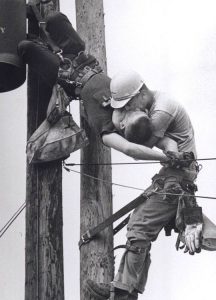 It’s every workers nightmare…being faced with a life or death situation involving a co-worker, and you are the only thing standing between the co-worker and certain death. On a hot July day in Florida in 1967, a nightmare emergency situation would unfold making linemen history, and journalistic history at the same time.
It’s every workers nightmare…being faced with a life or death situation involving a co-worker, and you are the only thing standing between the co-worker and certain death. On a hot July day in Florida in 1967, a nightmare emergency situation would unfold making linemen history, and journalistic history at the same time.
Rocco Morabito was a journalist with the Jacksonville Journal. His day began as he was headed to a local news event. He paused to watch as linemen worked above him, before heading on to his job for the day, covering a railroad strike. H snapped a few images and then headed back to the office, but as he passed the linemen, he heard screaming. Looking up, he saw Randall G. Champion, unconscious, his body hanging limp but still in his safety harness. Fellow lineman, J. D. Thompson was an apprentice lineman, but in a nightmare emergency moment, he sprang into action with lightening speed, racing to the pole and quickly climbing up to Champion. The position of Champion’s body made it impossible to administer CPR, so Thompson cradled his head in his arm and began giving mouth-to-mouth resuscitation, working to breath life back into his fellow lineman. His quick thinking and actions, made Thompson a hero that day.
Being a photojournalist, Rocco instinctively snapped an image and then ran to his car, to use the radio to have the paper call an ambulance. In reality, Champion would owe his life to both men, because they both reacted quickly and did what needed to get done to get Champion the help he needed. Unable to further assist with the rescue, Rocco grabbed his camera. He backed up and continued to walk backward until he backed into a house. With no where else to go, he clicked “THE historic image.” As he snapped that last photo, Thompson yelled out, “He’s Breathing!”
After Rocco ‘got the shot’, he returned to his car and again radioed the newspaper dispatch, this time, telling them, ”You might want to wait for this. I think I’ve got a pretty good one.” The paper waited, and the wait was indeed worth it. Rocco Morabito won the 1968 Pulitzer Prize for Spot Photography…the first of its kind. Bob Pate, the copy editor of the Jacksonville Journal is credited with the ‘slug that stuck’, ”The Kiss of Life.” From safety classes to anthologies, and even a documentary in 2008 on the 40th anniversary of that fateful event, the photo has maintained a life of its own. When I saw it, I was as moved by it as anyone else who has ever seen it and been told what it was. You just don’t walk away from that without having a sense of awe about the events of that day. And the training value of it would be phenomenal!!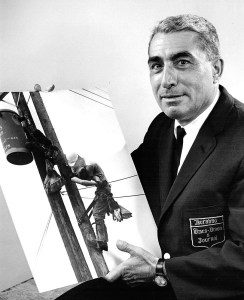
Champion and Thompson both continued to work as linemen until retirement. Champion retired in 1991, but sadly passed away in 2002 at the age of 64, as a result of heart failure. Thompson retired around 1995 having received several awards for his heroism and quick thinking. He is noted as having said that, “he was acting on his training and was thankful he could revive his downed co-worker.” He was just “doing his job.” What?? I don’t think so!! This was not just doing his job. This was heroic. That is typical of most heroes. They were “just doing their job.” Rocco worked for the newspaper for a total of 42 years. For 33 of those years, he worked as a photographer. He retired in 1982, and passed away at the age of 88 on April 5, 2009. His work, including “The Kiss of Life”, will continue to live on, illustrating the harrowing work that our linemen men and women perform every day, and sometimes just how heroic they really are.
 Whether you have called 911 or not, everyone knows what 911 is, and that calling that number will bring immediate help. If you have ever had to use the service, you know how vital it is, but did you know how it got started? Prior to 1968, there was no 911 system in the United States, or really anything like it. If people had an emergency, they dialed “0” for the operator. Of course, the operator was dialed for many other things too, so it was not always the fastest way to get help in an emergency. The Federal Communications Commission (FCC) knew that things had to change.
Whether you have called 911 or not, everyone knows what 911 is, and that calling that number will bring immediate help. If you have ever had to use the service, you know how vital it is, but did you know how it got started? Prior to 1968, there was no 911 system in the United States, or really anything like it. If people had an emergency, they dialed “0” for the operator. Of course, the operator was dialed for many other things too, so it was not always the fastest way to get help in an emergency. The Federal Communications Commission (FCC) knew that things had to change.
They wanted a number that would be easy to remember, and one that had never been used before…like 411 for information. Choosing 911 as the universal emergency number was not an random selection, but it wasn’t a difficult one either. In 1967, the FCC met with AT&T to establish such an emergency number. They wanted a number that was short and easy to remember, but most importantly, they also needed it to be a unique number, and since 911 had never been designated for an office code, area code or service code, that was the number they chose. Still, the system did not start out at the national level.
On February 16, 1968, Alabama Senator Rankin Fite made the first 911 call in the United States in Haleyville, Alabama. The Alabama Telephone Company carried the call. A week later in Nome, Alaska, the 911 system was implemented there. In 1973, the White House’s Office of Telecommunication issued a national statement supporting the use of 911 and pushed for the establishment of a Federal Information Center to assist government agencies in implementing the system. Soon after, the United States Congress agreed to support 911 as the standard emergency number for the nation and passed legislation making 911 the exclusive number for any emergency calling service. A central office was set up by the Bell Telephone System to develop the infrastructure for the system.
After its initial acceptance in the late 1960s, 911 systems quickly spread across the country. By 1979, about  26% of the United States population had 911 service, and nine states had passed legislation for a statewide 911 system. During the latter part of the 1970s, 911 service grew at a rate of 70 new local systems per year, according to the National Emergency Number Association (NENA). Approximately 50% of the United States population had 911 service by 1987. In 1999, about 93% of the nation’s population was covered by 911 service. The number “911” is now the universal emergency number for everyone in the United States. In 2000, approximately 150 million calls were made to 911, according to the NENA. If you were born in the 1960s or later, 911 was ingrained during childhood. For those born prior to 1968, the 911 system has also become second nature.
26% of the United States population had 911 service, and nine states had passed legislation for a statewide 911 system. During the latter part of the 1970s, 911 service grew at a rate of 70 new local systems per year, according to the National Emergency Number Association (NENA). Approximately 50% of the United States population had 911 service by 1987. In 1999, about 93% of the nation’s population was covered by 911 service. The number “911” is now the universal emergency number for everyone in the United States. In 2000, approximately 150 million calls were made to 911, according to the NENA. If you were born in the 1960s or later, 911 was ingrained during childhood. For those born prior to 1968, the 911 system has also become second nature.
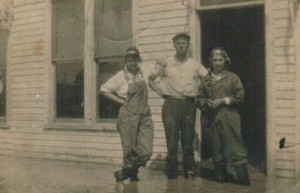 After my husband, Bob’s 2nd great grandma, Mary LuLu Taylor remarried, following the death of her first husband, James Leary, on March 26, 1888, she and her second husband had three children, bringing to four the total number of her children. Her life had taken her from Forsyth, Montana to Shelby, Missouri, where she met James Begier, who became her second husband. Later, they would move to several other times, but Montana always seemed to be in her blood and she would return there several times. Her daughter Mabel Claire Begier met and married her husband, Edward Anthony Brown in Rosebud, Montana. I’m not positive at what point Mabel became a telephone operator, but she did, and as it turns out, that’s where she was working during one of the floods that took place in Montana. That job, at that time in history, put her right in the middle of a serious situation, and in a position to help those in need of assistance.
After my husband, Bob’s 2nd great grandma, Mary LuLu Taylor remarried, following the death of her first husband, James Leary, on March 26, 1888, she and her second husband had three children, bringing to four the total number of her children. Her life had taken her from Forsyth, Montana to Shelby, Missouri, where she met James Begier, who became her second husband. Later, they would move to several other times, but Montana always seemed to be in her blood and she would return there several times. Her daughter Mabel Claire Begier met and married her husband, Edward Anthony Brown in Rosebud, Montana. I’m not positive at what point Mabel became a telephone operator, but she did, and as it turns out, that’s where she was working during one of the floods that took place in Montana. That job, at that time in history, put her right in the middle of a serious situation, and in a position to help those in need of assistance.
When we think of any disaster…be it fire, earthquake, tornado, or flood, our first instinct these days is to dial 911 on our phones. That has become the go to number for all kinds of help in times of need. That wasn’t always the case though. Years ago, it was the operator you called for help. You simply dialed “0” to get in touch with someone who could connect you with any branch of emergency help there was…as well as to let everyone else in town know about the emergency…at least back then they could. Privacy laws would have prevented that these days. Of course, if it was a big emergency, letting everyone know would be her job.
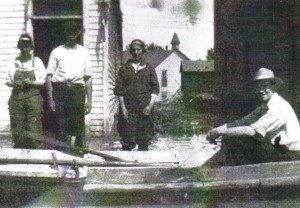 Mabel Begier was an operator during an emergency that would have qualified as one in which it was acceptable to let people know, but then my guess is that most people already knew that it was coming. Floods in towns where you live near a river are common in the Spring, especially after a particularly high snowfall year. People who live near rivers already know that Spring means that you have to watch the water levels, stay prepared to evacuate, and stay informed at all times. At that time in history, when a warning needed to be sent out, you called the operator to get the warning out. That was where Mabel came in, and she loved her job. I think the job that she had was very important, and she was a key part of the emergency efforts of that era.
Mabel Begier was an operator during an emergency that would have qualified as one in which it was acceptable to let people know, but then my guess is that most people already knew that it was coming. Floods in towns where you live near a river are common in the Spring, especially after a particularly high snowfall year. People who live near rivers already know that Spring means that you have to watch the water levels, stay prepared to evacuate, and stay informed at all times. At that time in history, when a warning needed to be sent out, you called the operator to get the warning out. That was where Mabel came in, and she loved her job. I think the job that she had was very important, and she was a key part of the emergency efforts of that era.
 As a young mother of two daughters, both under 4, there were days when the world seemed a scary place. March 28, 1979 was one of those days. At 4am that March morning, an event took place that changed the way we felt about nuclear power. Suddenly, it became just a little bit dangerous. We were used to power plants, and they had never seemed like anything that could cause great harm. All that changed on March 28, 1979, when a pressure valve in the Unit-2 reactor at Three Mile Island failed to close. Cooling water, contaminated with radiation, drained from the open valve into adjoining buildings, and the core began to dangerously overheat. It was the worst accident in the history of the United States nuclear power industry.
As a young mother of two daughters, both under 4, there were days when the world seemed a scary place. March 28, 1979 was one of those days. At 4am that March morning, an event took place that changed the way we felt about nuclear power. Suddenly, it became just a little bit dangerous. We were used to power plants, and they had never seemed like anything that could cause great harm. All that changed on March 28, 1979, when a pressure valve in the Unit-2 reactor at Three Mile Island failed to close. Cooling water, contaminated with radiation, drained from the open valve into adjoining buildings, and the core began to dangerously overheat. It was the worst accident in the history of the United States nuclear power industry.
The place was the Three Mile Island nuclear power plant. It was built in 1974 on a sandbar on Pennsylvania’s Susquehanna River, just 10 miles downstream from the state capitol in Harrisburg. The second reactor began operating in 1978, and the plant was given rave reviews for generating affordable and reliable energy in a time of energy crisis. Then came disaster. A broken pressure valve started leaking the cooling water, and the emergency cooling pumps automatically went into operation. This process would have taken care of the problem, if not for human intervention. The operators misread the confusing and contradictory readings, and shut down the emergency water system. The reactor was also shut down, but residual heat from the fission process was still being released. The next morning, the core temperature was over 4,000 degrees, just 1,000 degrees short of meltdown. Had a meltdown occurred, deadly radiation would have drifted across the countryside, fatally sickening a potentially great number of people. The plant operators struggled to understand what had happened, while contaminated water was releasing radioactive gases throughout the plant. The radiation levels, were not immediately life threatening to the plant  workers, but they were dangerous. The core continued to cook as the contaminated water was contained and precautions were taken to protect the operators.
workers, but they were dangerous. The core continued to cook as the contaminated water was contained and precautions were taken to protect the operators.
Then, about 8am the news leaked to the outside world. The company tried to sugar coat it as much as they could, saying that no one outside the plant was in danger, but when it was discovered that at least a small amount of radiation had leaked to the area, the governor told people to stay in doors as a precaution. The reality was sinking in. This wasn’t as benign as they had tried to make it seem. In the end, I suppose the damage wasn’t great, but it could have been, and I recall feeling just a little less safe.
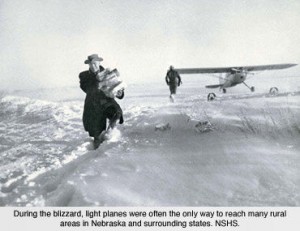
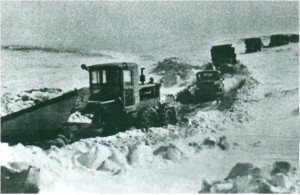 A few days ago, my father-in-law received a phone message from an old family friend. She was calling to wish my mother-in-law a belated happy birthday, and to ask my father-in-law what he remembered about the 1949 blizzard in reference to Colstrip, Montana. Since my father-in-law was in the hospital at the time, I called her back and told her that I would have him call her. Meanwhile, my own interest was peaked about this blizzard, of which I had been totally unaware prior to this call. I got on the Internet and did some searching of my own, and I was quite surprised at what I found.
A few days ago, my father-in-law received a phone message from an old family friend. She was calling to wish my mother-in-law a belated happy birthday, and to ask my father-in-law what he remembered about the 1949 blizzard in reference to Colstrip, Montana. Since my father-in-law was in the hospital at the time, I called her back and told her that I would have him call her. Meanwhile, my own interest was peaked about this blizzard, of which I had been totally unaware prior to this call. I got on the Internet and did some searching of my own, and I was quite surprised at what I found.
The 1949 blizzard began on January 2, 1949, and it was soon to be called the “worst winter ever” by anyone who had the misfortune to go through it. The storm roared across several states, and was actually a series of storms that raged on until February 22, and dumped between 50 and 60 inches of snow, depending on where you were. It put a whole lot of people, especially farmers and ranchers in dire straits. Before long everyone knew that something was going to have to be done. Emergency flights of supplies began bringing everything from food to hay to the desperate people in the area. Snow plows pushed through in an effort to get truckloads of hay into the ranchers. Still, it would not be enough to stop the massive loss of livestock that the coming spring would reveal, not to mention the 235 people across several states who lost their lives. My father-in-law told me that the cows tried to stay above the snow by walking on it as it fell. When the snow got very deep, the cows ended up walking above the trees. Then the weight of their bodies caused them to fall through the snow and into the tree tops, where the were trapped and died of starvation. Some ranchers lost entire herds of cattle, either to falling through the tree tops, or being buried alive. My father-in-law told me that the spring brought a horrible sight. Dead cattle hanging in the trees…everywhere.
Transportation came to a standstill too. Before long trains were unable to move forward, and became buried in the snow, right where they stood. When the tracks were finally cleared, the snow would stand as much as 18 feet high beside them. I’m quite sure it was an eerie sight when the trains finally began to move again, because the piled snow was much higher than the trains, and so prevented any view from the train. Not that it mattered much, because there was nothing but snow to see anyway. I can imagine that if a person was at all claustrophobic, however, the feeling that they would encounter going down that track would be almost more than they could bear.
The spring of 1949, would bring to an end, “worst winter ever” and the beginning of healing for many people. 
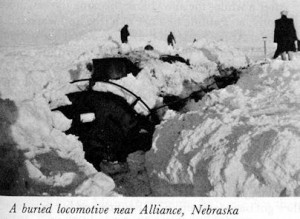 Ranchers would have to begin again. Their herds would have to be rebuilt, and it would take much time and a lot of work. I can imagine that the flooding from all that snow was devastating too. Still, healing would take place too. That spring was also one of beginnings, such as the beginning that is so special to my father-in-law, because on June 6, 1949 he would marry the love of his life, my mother-in-law, and so began their years of marriage…63 years and counting.
Ranchers would have to begin again. Their herds would have to be rebuilt, and it would take much time and a lot of work. I can imagine that the flooding from all that snow was devastating too. Still, healing would take place too. That spring was also one of beginnings, such as the beginning that is so special to my father-in-law, because on June 6, 1949 he would marry the love of his life, my mother-in-law, and so began their years of marriage…63 years and counting.
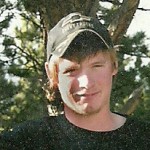 Today, August 11th, as I write this, it is my nephew, JD’s birthday. He is 23 years old. I remember when he was born…premature by several weeks. My sister-in-law, Jennifer is a OB nurse, and she knew something was wrong, and she knew exactly what it was…Placenta Previa. Sometimes that condition can go along and not be too dangerous to mother or baby, and the baby is simply delivered by Cesarean Section to avoid excessive bleeding, but in some cases, as in JD’s case, bleeding begins and an emergency Cesarean Section is necessary.
Today, August 11th, as I write this, it is my nephew, JD’s birthday. He is 23 years old. I remember when he was born…premature by several weeks. My sister-in-law, Jennifer is a OB nurse, and she knew something was wrong, and she knew exactly what it was…Placenta Previa. Sometimes that condition can go along and not be too dangerous to mother or baby, and the baby is simply delivered by Cesarean Section to avoid excessive bleeding, but in some cases, as in JD’s case, bleeding begins and an emergency Cesarean Section is necessary.
On August 11, 1988, Jennifer knew she had a serious problem, and worse yet, she was at home…alone. She also knew that by the time someone could get to her, it would most likely be too late, so she drove herself the mile or so to the hospital, where she was rushed to surgery for an emergency Cesarean Section in a desperate and, in the end, successful attempt to save the lives of her and her baby, JD.
JD came into this world, a healthy premature baby, because his mother knew what to do, and God protected both of them on a very dangerous journey that had to be taken, because their very survival depended on it. JD’s birth, and continuing health were brought about by a series of miracles. I thank God that He protected both of them.
Now, 23 years later, JD is a successful mechanic, and a very sweet young man. It would have been such a loss to our family, if he were to have never been a part of it. It is a gift from God that he is here, and we are all very blessed. So happy birthday JD!! You have been in my thoughts all day today. Hope your birthday was awesome. May God continue to bless you always!!

